– Welcome, everyone, to Wednesday Nite @ the Lab. I’m Tom Zinnen, I work here at the UW-Madison Biotechnology Center. I also work for the UW-Madison Division of Extension, and on behalf of those folks and our other co-organizers, Wisconsin Public Television, the Wisconsin Alumni Association, and the UW-Madison Science Alliance, thanks again for coming to Wednesday Nite @ the Lab. We do this every Wednesday night, 50 times a year. Tonight, it’s my great pleasure to introduce to you Luxme Hariharan. She’s with,
(Tom and Luxme laughing)
you have people gesticulating over here, that’s great!
She was born in Hyderabad, India, and grew up here in Madison where she graduated from Madison Memorial High School. Then she went to UW-Madison here and as an undergraduate studied Latin American and Caribbean studies and also biology. Then she did her MD degree here at UW-Madison, went on to Johns Hopkins to get an MPH, a Master’s of Public Health. Most recently, she has consulted for the World Health Organization, and she works with SightLife.
It’s pretty appropriate ’cause tonight she’s going to be talking about avoidable blindness, and for some of you who know, the seal of the university has this all-seeing eye on it, and we have some pretty interesting connections to both the idea and the ideal of vision and being able to see and foresee, and I’m very happy to have this as a topic that comes together. This is also the start of our 14th year of Wednesday Nite @ the Lab, doing this every Wednesday night, 50 times a year, and it’s great to have such a distinguished alum come back to Madison to give a talk to us. Luxme will be speaking to us on leadership, advocacy, collaboration, policy, and legislation to eliminate avoidable blindness worldwide. Please join me in welcoming Luxme Hariharan to Wednesday Nite @ the Lab.
– Thank you, Tom, thank you.
(audience applauding)
Thank you very much, Tom, for that very kind introduction. Can you hear me okay? My voice, okay, very good. It is an absolute honor to be with you all this evening. This is my hometown, so I’m very thrilled to come home and be able to share this with you. I see a lot of familiar faces in the audience, and it feels like I’m speaking to my family, so I really appreciate that. I am going to be talking about eliminating avoidable blindness globally and locally, and as you can see from this picture of Bucky Badger, and as Tom mentioned, I went to high school here, I went to undergrad and medical school, so wherever my path leads me, I’m always a Badger at heart, and so I will always be a Badger, so I’m very excited. I’m very humbled to share with you stories of people that I’ve met and worked with on this journey to avoid, for avoidable blindness, and those of you who know me know that I love taking photos, so you’ll see a lot of photos of people in this presentation, and you’ll be coming with me to Argentina, Mexico, and India on this journey. And before we embark, I’d like to begin with talking about the Wisconsin Idea, because it actually is very relevant to the talk tonight. And for those of you who didn’t know, I didn’t know, I did some research about this, the Wisconsin Idea is the, signifies the university’s commitment to public service, and it was founded by UW President Charles Van Hise with this idea that education should exist beyond the classroom, and this is the Wisconsin Idea. And how it’s relevant is he actually was friends with Robert La Follette at university, and when Robert La Follette became governor, they remembered their friendship, and they used that to forge bonds with the university and the government to make some ground-breaking laws in workers’ compensation legislation reforms, in tax reforms, and this was known, Wisconsin was known as legislative innovation at this time in the earlier 20th century, so this is very relevant to what I’ll be sharing with you today. And also from the Wisconsin Idea page, this photograph was taken from there, and before we embark on this journey, I want you to just remember these three images, trying to keep it simple. The silos, the farm in Wisconsin, a five-legged stool, and the number five. Now, I don’t know if anyone has any ideas of why this would be relevant to avoidable blindness, but I assure you it is, and I hope you– If there’s anything you remember, I want you to remember these images as we continue. And we’re going to be– This is the overview of my talk today. We’re going to be talking about what the problem is of blindness, why it’s important, current strategies to address blindness, and some of the limitations to those strategies, the power of collaboration through these countries and case examples in these countries, local action, we’re going to bring it right back to Wisconsin with the Wisconsin Idea, and then key lessons and next steps.
So with any problem, the first important step is defining the problem before you can come up with a solution. So the definitions of blindness and visual impairment you will see on this chart, and I’m not going to go into details of how they broke it down, but what I want you to focus on is that there’s mild visual impairment, moderate and severe visual impairment, blindness, and presbyopia, that are all defined by the community by vision charts. And this is how we discuss when we when we talk about blindness and visual impairment. Now, this map talks about the prevalence globally of visual impairment, and if you’ll notice, you’ll see that the large visual impairment in Northeast Africa and in Asia seems to have the larger amounts of prevalence. However, what the graph does not show is that the distribution of the prevalence is unfortunately 90% in poorer communities, and so it doesn’t show that 90% of visual impairment and blindness affects poor, low-income countries and communities. And so this graph is a pie chart that talks about, that visualizes this in a different way. If you look at the circle, you see we have about seven billion in the world as the population, and if you look at the red pie, this is visual impairment, and out of this pie, about 14% of that pie is blindness, and the rest is low vision. Now, why this is important is for two reasons, is because 80% of this visual impairment is actually preventable and curable, and that’s a large number. And in addition, like just to give you some perspective of what that number is, of what 285 million is, if you think of the country of Indonesia, it’s the fourth most populous country in the world behind China, India, U.S., Indonesia, 35 more million is that number. So if we, it’s frustrating to know that we can prevent that. It gives us a challenge, that’s why this is so important. So the causes of visual impairment and blindness are different depending on the definition. So uncorrected refractive error and cataract, you’ll see is the number, the two causes of both uncorrected refractive error, glasses. I see many people wearing glasses in the audience. And cataract is a surgery of the lens, and I’ll show you a picture of the eye to give you that. Diabetic retinopathy, trachoma, river blindness, infectious causes, in the last 20 years, these have all gone down because of public health impact and work, so that’s great.
Now, avoidable blindness: 75 to 80% of visual impairment is avoidable with timely screening and low-cost interventions such as glasses and cataract surgery, and like I mentioned, 90% live in low- and middle-income countries, and what’s even more unfortunate is it disproportionately affects vulnerable communities including children, women, the elderly, and rural communities. And so this is the spread of what we’ll be talking about, but I highlight children because that is my, my background is in pediatric ophthalmology, and with childhood blindness, while there’s a smaller number or prevalence, there are still 40 to 60% of the causes are avoidable. And it very much depends on socioeconomic country, of the country, so here you see higher middle-income countries, retinopathy of prematurity is one of the main causes, and we’re going to be talking about this in my case examples, and corneal scarring, and the reason it’s so important is because in a child, their visual pathway forms by the time they turn eight or nine, so early detection is key because we can actually change, intervene at a time where we can change their visual pathway so they can actually have 20/20 vision with interventions such as glasses and surgery and patching. And oftentimes a child will not be able to tell you that they cannot see, which is why vision screenings in schools and pediatric visits are important. So this is the community, and I’ve showed you some numbers and I’ve showed you some graphs, but what I really want to show you is some faces of childhood blindness. And this is Fatimah from Niger, and she’s the face of trachoma. And why I say that is because she has, if you notice, she has flies around her eye, her face is a little dirty with some dirt on it. And so trachoma is, Chlamydia trachomatis causes scarring in the eye, and it’s preventable from what’s known as the SAFE strategy, surgery, antibiotic, face washing with access to water and in the environment with access to just well water, for example, to clean her face. And so the WHO has, we will see in our lifetime the elimination of trachoma. Already it’s been eliminated from many countries. Morocco was one of the first countries because of partnerships with private sector pharmaceutical companies, azithromycin and different programs, but we know that there are still kids like Fatima that really should not be blinded from trachoma, and so this is why I show her. This is a group of students from Helen Keller School in Argentina. They are all blind from, or visually impaired, from retinopathy of prematurity, which we’ll be talking more about, so they were born premature and had that. These are also kids in the neonatal intensive care unit in El Salvador, and what I want you to notice is that there’s three in one incubator. You don’t find that in countries that have access to care, and they’re sharing oxygen, and that’s one of the risk factors which we’ll talk about. This is one of the more of famous faces of ROP. I don’t, many of you might not know, but Stevie Wonder had ROP when it was the first epidemic in the U.S. in the ’40s and ’50s. Second epidemic happened later when babies were living longer, and the third epidemic is now in Latin America and Eastern Europe, middle-income countries, which we’ll talk about. And this is Karthik, and Karthik is from Hyderabad, where I was born, and the reason I show you this photo is he was born with a congenital dystrophy of the corneas, corneal scarring, and he was very shy in school. He was held back some grades in school because he couldn’t see, but he wasn’t participating, and when he had his first corneal surgery, this was the pose that he gave because he said he felt like a superhero. And then when he had his second corneal surgery, corneal transplant, he said now he’s excited to be a photographer, an artist, and a scientist. So really, this work is so important because it unleashes potential in our children and in people, and so that’s one of the big whys. And I think when we know the why, the how happens naturally, but the why is it so important. And another reason the economic impact, eliminating avoidable blindness is one of the most cost-effective ways of fighting poverty. For every $1 invested in blindness prevention, $4 is returned back to the economy. This is important for when we bring in eye care programs with ministers of finance and health to budget for them. And there are direct causes of blindness and visual impairment to health care systems that you’ll see here, from just the costs of glasses and the medications, but there’s also indirect causes that a lot of people don’t remember. But these indirect causes are for caregivers and governments having to give things like Medicare, visual aids, and productivity loss from visual impairment. And why this is important is if we do not do something about this now, in 2020, which is right around the corner,
we’re predicted to spend over $3.5 trillion on blindness, and the DALYs by 2020, which are disability-adjusted life years. One year loss of a healthy life due to the burden of disease is up to 150 million. So this is important. This is why we need to do something now. And so we’ve talked about the problem, we’ve talked about why it’s important, now I want to talk about some current strategies that address blindness prevention. And there are many strategies that are employed to tackle this avoidable blindness. Surgeries and clinical care, like I showed you, cataract surgery and glasses are one of the main reasons, so direct patient care. Eye care workforce training, so that’s capacity-building of optometrists, ophthalmologists, funding of hospitals, medicine, equipment, that’s resources. Access, so making sure that people have access to getting screenings through telemedicine initiatives. Research on the burden and other innovative diseases and solutions, innovative solutions to the diseases, and policies and standards. Now, there are limitations with some of these strategies and that includes that oftentimes when we think about surgeries and clinical care, they are not sustainable if they go once and do surgeries and they leave, then it’s not embedded in the program and there’s no follow-up. Oftentimes it’s this model of teaching someone how to fish, but that assumes that they’re in streams with fish, and so that’s another thought of there. And then with eye care workforce training, we have something called the brain drain where if people come and get their skills somewhere, oftentimes they stay in those places and don’t go back to their countries, or we see disproportionate amount of trainees in areas where the need, there is need that we lack trained professionals. Funding often becomes difficult with hospitals with competition for resources. There’s often lack of communication and coordination on distribution and which clinics need what resources.
And with research, programs, and grants, oftentimes it’s unpredictable on whether grants will be renewed and how funding sources will come through. And often policies and standards do not include vision as part of their embedded in the health care system, and so these are some of the limitations. And this is why I call this the silo effect, because I find that in my work that so far a lot of organizations including nonprofits, academics, everyone works in silos, and there’s often little communication across these silos to address the problem, but they’re doing it with their own efforts, and I would like us to break these silos and instead move towards fostering collaboration across sectors with common strategic targets and sustainable scalable solutions. And this is why I have the five-legged stool approach, because I see these five legs as academic centers, nonprofits, government, legislation, ministries, local champions, and national advocates and the private sector, corporate social responsibility initiatives, and these, when we collaborate on the same level with all five of these, we can elevate and reach great heights with the stool. So you’ll see these in my examples. So the first example is we’re in Argentina, and this is an example of where this has been proved to have impact. So over the last 20 years in Argentina, they went from a recognition of an epidemic of retinopathy of prematurity, we’ll go more into detail about that, in Argentina to a formation of a group within the Ministry of Health from national advocates, to a novel program with UNICEF and the Ministry of Health, to legislation that promoted ROP, to finally decreased numbers of ROP, children having ROP. This was recently published in Health Policy and Planning that talked about this whole story, but ROP in Latin America is important. It’s one of the main causes of childhood blindness, and up to 60% of children are blind from ROP. It’s the third epidemic in these areas. Some of the risk factors include low birth weight, too much oxygen, and sepsis, so it’s an indicator for neonatal care in these in these centers. And this is an example of– So the in the back of the eye, so you see this is the retina, and this is the area of the retina that is not vascularized. So in the premature infant, the vascularization stops here, the blood vessels are not here. And so there’s something called VEGF that gets secreted and promotes blood vessels. So what happens is you can get tortuous vessels, and that can lead to bleeding, detachment, blindness. But this can be prevented by noting, screening these babies that have risk factors by working with the neonatologists and the nurses, adjusting the oxygen levels, and by doing laser to these areas so that it doesn’t affect, doesn’t actually lead to blindness. So in Argentina, the ROP epidemic was noted in the Hospital Garrahan, and they noted that about 80% of the kids were going blind from ROP, really advanced ROP, and this was three times more than in most industrial nations at the time, in the 1990s. And so they noticed this, and this group of– I call them national advocates or heroes, Dr. Alicia Benitez, the neonatologist, neonatologist Celia Cruz, Celia Lomuto. They were the ones that said something is not right here. Why are all these kids going blind from ROP? What is happening? We need to do something. So they approached their Ministry of Health in Argentina and said, “Can you help us figure out a solution?” The ministry did not have resources at the time, so they said we can help you organize, but we don’t have space, we don’t have budget for you. They said, that’s okay. They did it on their own time. But they organized a national ROP group, and they then went to UNICEF and they asked UNICEF if they could get some resources for a Ministry of Health ROP intervention. And with this intervention, what they noticed, they had resources with PAHO, the Pan American Health Organization. They held workshops, they realized that there was a lack of education of nurses, they realized they didn’t have enough resources, they realized there was no coordination between the nurse, between the neonatologist, between the ophthalmologist, so they formed a program that addressed this. And this program was launched from 2004 to 2008 across these NICUs, and a total of 70 neonatal units were involved, and these are the types of things that they, the materials that UNICEF provided showing too much oxygen level as an alarm of what level. Wristbands of kids that weren’t screened. And they even had a Week of the Premature Infant, which was like the Week of the Lactation Infant. It was symbolled off of that, and the reason that this was important is it was the first time it happened in Argentina, the rights of a premature child. And they talked about ROP and what’s needed to control it. They invited parents, and they had kids that had ROP and now they’ve grown up without going blind. And so the idea is building advocacy around this issue, and UNICEF was instrumental in that way with the Ministry of Health because of this group of individuals. Now, in 2007, by chance, there was a senator whose daughter had ROP and so was asked, so was really passionate about forming legislation for access to equipment, and so this was passed. And once this was passed, it helped, it also helped gather support for resources in areas that were in rural areas. So this woman, this is a nurse, a neonatal nurse from Chaco and Corrientes, and she used to always carry the legislation with her because if her director said, “Oh, I’m sorry, we don’t have a budget for equipment,” she would show her the legislation and say, “No, sir, we need this equipment.” And so, it empowered people to get the resources they needed when the legislation was passed. And what we saw, the impact, we see that when we visited the blindness schools, the cause of blindness was no longer ROP, 50%, it went down to 23%. And the rates of children that were needing treatment, that dropped about 40% in terms of the kids of the advanced ROP. So we saw a real impact, and Argentina did not have the rates of 60% that they used to of ROP. So really the combination of all of these factors played a role in this, not anything in isolation, but the combination, and these lessons can be learned and replicated across Latin America with these ROP coordinated units of neonatologists, neonatal nurses, and ophthalmologists. And one of the areas where this was replicated was in Mexico. They had a World Prematurity Day, an advocacy campaign where the mayor in Queretaro made sure all the lights were purple. And it was an example of making sure people had awareness of what ROP is and why everybody needs to be aware that it can be prevented. So these are just examples of how this was carried out. And now that we’re in Mexico, we’ll continue on in Mexico. And now we’re going to talk about corneal blindness. So ROP was the back of the eye, the retina, but the cornea is the front part of the eye. And you can see right here this little child, it’s hazy, right, so it’s the window, I would say, to the eye. So we can get cornea transplants to clear that, and we know that 12 million people around the world suffer from corneal blindness, and the majority of those are in developing countries. And in the U.S., if we need a cornea, we can get access to it. There’s no wait list in the U.S. if a cornea transplant’s needed. We also have Eye Banks Association of America. We also have regulatory measures. In Mexico, there’s a wait list of about 8,000. This number was, this number’s actually growing, and so they need to import corneas. They don’t have, they only have about 40% that they’re doing on their own, and they don’t have the tools at the moment to do– They didn’t at the time. And if you see from this graph of the government, you’ll see that they have eye banks and they have reported centers that do transplants. And they say that from the last, from 2010 to 2015, there’s been a 40% increase in donation. However, this distribution is not equal across rural and urban areas and across health sectors. So there are very– There are clear problems with standardizations and coordination of processes, professionalization of systems, limited training, and opportunity, educational opportunities and complex health systems. So one of the solutions: SightLife is a nonprofit based in Seattle that focuses on corneal blindness. We went in and worked with some local leaders to decide how we can increase national corneal transplant efforts and build local capacity. And one of the ways this was done was through,
CENATRA was formed through the Ministry of Health in 2009. It’s a group of individuals whose job was to monitor the data, a donor registry, monitor the effects, and here you can see this is the director of CENATRA. He’s a transplant surgeon and his team. And their charge was to lead efforts in knowing what the problem is, defining the problem, figuring out the issues. And what we’ve found since 2009, if you look at this graph, you can see that the number of transplants that have happened nationally has increased, and the number of imports has decreased. And Mexico, in fact, is one of the countries that has a lower percent of importation compared to other countries in Latin America, as high as 90% in Dominican Republic where they’re not doing their own transplants. And another reason that this was another solution was that in 2016 they formed the Eye Bank Association of Mexico where cornea surgeons and eye bank directors came together, and they modeled after the Eye Bank Association of America, Eye Bank Association of India, to form standards and professionalization of eye banking. And there was cross-sector collaboration with the ministry, with academics, and with this new association to figure out how they can solve this problem. And the strategic collaboration allowed them to standardize and professionalize, professionalization of eye banking, creating policies and quality standards that are now going to be published with the Ministry of Health and an implementation of a national plan. And if you notice at this table, they’re not just ophthalmologists, and that’s the key. It’s different groups, different sectors, and there’s always room at the table for more people, and I think that’s key in establishing these situations. And there is global collaboration as well. We had a conference where the eye bank president of India met with the eye bank president of, association president of Mexico to discuss issues and best practices, and I think this is key because what we find is we’re much more similar than we are different in these countries. In China, so you have leadership from China, Mexico, and India, that met to discuss what’s working, what’s not, and how they can partner together. And with this, we had an inaugural eye banking congress, just this past January, I just came from this, and it was very exciting because we had people come, over 100 surgeons and recovery technicians and donation counselors were trained in Mexico from Honduras and Peru and Costa Rica. And this is going to be something that they’re going to do every two years. And it was the first time that collaboration with different NGOs, Lions International, SightLife, private sector, academics, all from these local champions like Dr. Lucero. So in conclusion for this topic, the CENATRA and the Eye Bank Association of Mexico were both formed, one through the Ministry of Health and one as an advocacy body of corneal surgeons and eye bank directors as initial vessels. But when they combined with standard operating procedures, certification, training, and support, that has potential to launch Mexico as leader now in corneal transplantation in the region.
So now, we talked about cornea. We talked about retinopathy of prematurity. I’d like to take us to India. This is Mysore, India, in South India. And we’re going to talk about a childhood blindness screening program, and this was in the schools. And what was unique about this program was that the teachers were involved, and the teachers, 80% of vision, of learning is visual, and so a lot of times, these kids first, they first notice in the schools, in the classroom, so the teachers were part of the vision screenings, and they identified students that they thought needed vision screenings. And we worked with a local nonprofit right here at home, Combat Blindness Foundation, and University of Wisconsin. Usha Kiran Eye Hospital was our local partner, our local champion that steered the project. And the Indian state government of Karnataka to locate which schools would be ideal. And the impact we had in Mysore was that over 65,000 children are screened annually, and they’re given glasses, and they’re provided with surgeries if they’re identified as a need. And they are given glasses right there in the school. All the treatment happens right there in the school. And because of this model, we’ve been able to replicate this in Paraguay, and right here in Madison, so through Combat Blindness Foundation. And right here in Madison, we’re involved with the Madison School District screening, so it’s very exciting to be part of this. And now back to the first slide about the Wisconsin Idea, legislative innovation. The other exciting thing that we’re doing is the Wisconsin Idea in Action, legislative innovation, we are working with local nonprofits and the state legislature to make childhood vision screening legislation in the state of Wisconsin standardized. We don’t currently have a law in the state that talks about this, so we’re in the process of helping to create that so that every child, no matter what school they go to, has access to the same vision screening and standards right here. And I’d like to play a video briefly
with this initiative since we have it here.
[Video]
So we know the numbers, I mean, in the last 34 years, we’ve done, I believe, over 300,000 cataracts, and we are screening children globally, about 90,000 a year. I mean, those are those are large numbers, but when I really think the CBI’s impact, I think of it as one of the girls that I remember from a site visit in Mysore when her teacher told me that her involvement in school became tenfold when she could have glasses. She was the one that was participating the most.
– The pediatric program is incredibly important, because we know that 80% of learning is visual. And we also know that we can detect disease conditions in children and treat them up to a certain age. But after that age, they’re no longer treatable, and a child is blind or visually impaired for the rest of their life.
– My granddaughter unfortunately did not have an eye problem diagnosed when it should’ve been. She’s very compromised in one of her eyes in terms of her ability to see. So that’s– We’ve had personal experience in our family with the importance of doing screening early with young people.- We also know that if the child has a problem and if it stays there for five, six years, then after that, we can’t do anything about it.
– I think if you can identify children and of different ages that you can kind of start identifying the two aspects of it. One is people who are going to have problems in the future, just kind of preventing that. But also making them successful in the community and in their schools because nobody knows that they’re having those problems. So just being able to do those two right away has tremendous value.
– CBI has made significant investments in pediatric program. So why is this important? Vision plays an important role in children’s physical, cognitive, and social development.
–
[Suresh]
Almost screening 80 to 90,000 children
every year in India, in Paraguay, and here in Wisconsin, in Dane County, so we have to expand that number.
– So doing these screenings, we’re giving children the opportunity to learn, to be kids, to play, and a future. We have made sure that our vision screenings happen at the time where it can have the greatest impact in a child’s visual pathway, and so not only do we do the screening at the right time with the help of the school system, but we also provide the intervention at the right time. Therefore, when a child gets those glasses and they’re able to see, they’re able to participate in class, they’re able to learn, that changes their entire trajectory for the rest of their life. That is a very unique impact we can have in a child versus an adult with glasses.
(instrumental music)
– So as you can see from the video, it is, it’s more of a changing the trajectory of a child’s life. So this now, we would like– I would like to talk about the key lessons and what’s next, what’s coming up next for avoidable blindness.
And so some of the key lessons learned from what we’ve discussed today is that to change any, to have any change to occur across sectors, across, we’ve seen across government, academics, nonprofits. First you need a political opportunity, and you need organized infrastructure, and you need local engagement and local advocates. In every example, it started with national advocates. In Argentina, it was the neonatologists. In Mexico, it the local corneal surgeon, Dr. Lucero. So it starts from the ground up, and in India, it was Dr. Ravishankar who’s at Usha Kiran who has a clear view of what the problem is. And then to set effective political agendas, you also need numbers and evidence-based studies to inform these programs and policies. That’s where the impact’s measures are important, looking at those numbers, and synchronized messaging across these sectors. So we talked about– So there’s clinical solutions, there’s surgical solutions to avoidable blindness, but there are also other solutions that we need to think about that include these policy, advocacy, and system solutions, because it’s, like I said, it’s more than just teaching someone how to fish, it’s providing them with streams of fish by creating an environment that supports this, and that’s through these different mechanisms of policy solutions, legislation, advocacy campaigns, in addition to the clinical and surgical, so it’s a multi-prong approach. And an example of this, where this has been successful is we recently published a toolkit on eye banking that has examples, case examples from Mexico, from India, from China, that anybody could, anyone that’s working in this topic can read and learn about, “Okay, what are ways, “what are some active ways that I can advocate “for access to corneal tissue or donor registry.” So it’s really important to have tangible solutions, and this is one example of that. And in terms of what’s next in avoidable blindness, I had one of, the past couple months, I’ve had the opportunity to work at the World Health Organization in Geneva. And one of the exciting things is they are developing a World Report on Vision, and this is to be launched in hopefully this next year, and the idea is that there has been world reports in road traffic injury and in disability, and once these reports have come out, it changes the game in the sense that it brings these issues on the global stage. It provides a unifying voice, it provides unified messaging and data that you can advocate across these issues. And so this is going to be, will have a catalytic role in bringing eye care, integrating eye care into health agendas, and so this is something that we are currently in the process of, stakeholders are contributing to this. And as you notice, some of those numbers that I presented in the beginning we’re from 2010, so we’ll have new, recent numbers of the data out there.
And in conclusion, I want to come back to these figures, these images, that I shared with you in the beginning: the silos, the stool with five legs, and the number five, and why I believe these are important. And what I want you to walk away with these simple images is that the take-home messages are that we need to break silos. We cannot be working independently on these issues. We need to be collaborating as teams, and we need to be instead building stools that are sustainable, scalable solutions to reduce blindness and foster collaboration, and that’s what real impact is. And you can see, you could see from each of the examples I gave in Argentina, in Mexico, and in India, it was not one group working alone that resulted in the impact. Rather, it was the sustained collaborative effort from the beginning of multiple stakeholders that attacked the solution in a way for it to be sustainable. And the legs of the stool, we talked about academic centers, number one, research to measure impact, to make sure there’s evidence. The nonprofits, nonprofits and NGOs, I mentioned three today that were vital in this work: SightLife, Orbis International for Argentina, SightLife was with Mexico, and Combat Blindness International with India. Nonprofits are key partners. Governments, legislation, ministries are key for knowing where the public investment, public sector resources are, and then local champions and national advocates who really are persistent with the message and notice these things in the beginning. That hospital in Garrahan, when they sounded the alarm that there was an epidemic of retinopathy of prematurity, it came from those local doctors and the nurses that said we have to do something. Even when they were told they don’t have a budget, even when they were told they don’t have room in the ministry, they persisted, they found resources, and they said there’s a problem and we need help. And private sector also has a role, like I mentioned with the trachoma program, it was the private sector funding that donated azithromycin. That’s when we knew that we needed antibiotics and the SAFE strategy, and that’s how trachoma’s eliminated in Morocco and in many other countries. And so we need all five working together, and we need to foster dialogue across these sectors from the beginning, empower local champions when they when they notice things so that we can make sure that they’re elevated and on the stool, and then create channels for communication, and this will help us reach great heights in eliminating avoidable blindness. And it’s an approach that needs to be replicated over and over for success. And this is an example of what can happen when we unleash potential. We have children that are at the top of these stools. This is the why of why we’re doing this, like Karthik with his superhero powers. And then the other reason I wanted you to remember the number five is because there are five shared themes
across these examples, and although they are different countries, although there’s different languages, there are different even eye conditions that we address, these themes played an important role. Again, it was the national champions and persistent advocacy. It was strong committed leadership that did not back down when things didn’t go right or when people were looking the other direction. It was the alliances across the sectors. It was the need for data and numbers to measure impact. If it’s not measured, it didn’t happen. And we need to measure impact so that we can actually prove that these are the models that are working, and we need global standards and best practices that we can scale. And they’ll be in local context applied to local context, but one you have global standards, these need to be published. And so the takeaway message here is that there’s much more that unites us than divides us. And I think the Margaret Mead quote of committed citizens, you know, “Never doubt that a small group of thoughtful, “committed citizens can change the world. “Indeed, it’s the only thing that has.” And these examples really exemplified that because it was not, it was not people coming in saying this is what the problem is. It was people that were champions who said this is what our problem is, how can we solve this in a collaborative way, and I think that is what’s going to be key. There is one more video I’d like to show you, I think we have time.
And, it’s here.
(calm music)
– The reason I started Combat Blindness, I wanted to give back, and I realized that retina problem was not the major blindness problem. It was the cataract cause of blindness for half of the world blindness. Furthermore, I realized that it costs so little to treat a cataract in a developing country.
– 37 million people are blind. If we do nothing, then in 20 years, we’re going to have 70 million people who are blind. We have to do something, we have to be involved.
– The saddest thing about the situation globally is that this is preventable, number one. And number two, a simple surgery can give back not only eyesight, but make somebody a productive member of the community and society and the family, right?
– The socio-economic impact of cataract, as well as pediatric program, is enormous. Once you give sight to a person who has cataract, he can not only take care of himself, but also he can take care of family and community. He can also go back to work, and we have done studies where we have shown that you spend $25 for cataract surgery, and in the first year alone, they can make 1500% of what you spend on them. Return on investment is enormous.
– At this point in time, Combat Blindness has supported over 300,000 cataract surgeries, which is unbelievable.
– I think the fact that CBI honed into the cataract program would be something that actually drew me to the organization because, again, it has immediate impact.
– 80% of the blindness we can treat or prevent. In $25, we can take care of the intraocular lens, the consumable, the transportation, some of their food, and also some of the salaries of some staff.
– I think Combat Blindness International is having a great impact around the world. We’re part of a global coalition, VISION 2020: Right to Sight. We’re one of many NGOs that are all part of this larger coalition all working together to alleviate preventable blindness, and it is together that we’re going to make the greatest impact.- That is great, and we actually have a lot of members of Combat Blindness in the audience. Reena Chandra, can you say hello? Yeah, so president of Combat Blindness. And you know, it shows that sustained commitment can have true impact.
And so, there is one more video that I would like to show. I think we have a few more minutes, and it’s actually, the video that I’d like to show you is on Orbis. Orbis is a Flying Eye Hospital, and that was the work that when we went to, when I went to Argentina, they were the group that funded that program, and why this is important to see is because they’re– it’s another innovative model of how do we affect child blindness. And again, through training is the model that they use, and this is a very powerful message here,
video that I’d like to show you. It’s a few minutes, but I think it really portrays this well.
(light instrumental music)
You can see it here.
– Orbis is a global nonprofit that brings people together to fight blindness.
– A one-of-a-kind plane is coming to this year’s Vectren Dayton Air Show.
– The Orbis Flying Eye Hospital travels the world performing surgery.
– With our partners around the world, we mentor, train, and inspire the local teams so that they can fight blindness in their communities.
– If 80% of all visual impairment can be prevented or treated with the right care, what you all are doing is truly remarkable, and I think you’re making the profession of medicine very proud. Keep up the great work.
– The idea was to take an airplane, put a teaching hospital on the airplane, and take it abroad to people who needed training.- And advise surgeons in Africa, South America, and Bangladesh.
– Probably the most important thing that Orbis does is train eye surgeons in their country.
– Last year, we did over 62,000 training sessions with doctors, nurses, and health care workers. We did over five million eye screenings and eye exams, and that led to over 96,000 surgeries and laser treatments around the world, every one of which affects a family and helps bring people out of poverty and back into the workforce.
– There’s a lot of people who are unnecessarily blind. 75% of all blindness could be prevented or cured, and 90% of that are in developing countries. So our focus with Orbis International is to focus on helping build capacity in those countries so that the doctors, nurses, and engineers can address the blindness there.
(inspiring orchestral music)
– The response from people who want to teach was overwhelming.- Orbis is very special to me, and look on Boeing’s relationship with Orbis International goes back 35 years. On behalf of all of at Boeing, thank you so much for the great work that you’ve done.
(logo whooshes and rings)
– Great, so that’s just to give you an idea of the different ways that the nonprofit world has been working together, and again, Orbis also with that Argentina program, we worked with the Ministries of Health there, too, so it’s the combination. So I’d like to, I’d like to end with the quote that I mentioned here, but also to acknowledge all the people that were involved with these projects, and right here, the Global Health Institute. And this is the website that you can go to. I want to share with you the Lori DiPrete Brown, who is a wonderful lecturer here, created a book of, a textbook of UW’s ideas and global health. And so a lot of faculty and students from here are in that. And so I think we have a lot of global health right here in Wisconsin, so that’s something to check out. And I’d also like to thank everybody for your time, and especially there’s two people I’d like to thank especially are my parents, who are in the audience today. And I think when I talk about support and being able to collaborate, I think these are, there’s no two better people that have shown me that with support and love and family and a plan you can really accomplish anything you want. And so I’d like to thank my parents in the audience for that.
(audience applauding)
Thank you very much for your time, and I’m welcome to any questions.
(audience applauding)
Search University Place Episodes
Related Stories from PBS Wisconsin's Blog

Donate to sign up. Activate and sign in to Passport. It's that easy to help PBS Wisconsin serve your community through media that educates, inspires, and entertains.
Make your membership gift today
Only for new users: Activate Passport using your code or email address
Already a member?
Look up my account
Need some help? Go to FAQ or visit PBS Passport Help
Need help accessing PBS Wisconsin anywhere?

Online Access | Platform & Device Access | Cable or Satellite Access | Over-The-Air Access
Visit Access Guide
Need help accessing PBS Wisconsin anywhere?

Visit Our
Live TV Access Guide
Online AccessPlatform & Device Access
Cable or Satellite Access
Over-The-Air Access
Visit Access Guide
 Passport
Passport


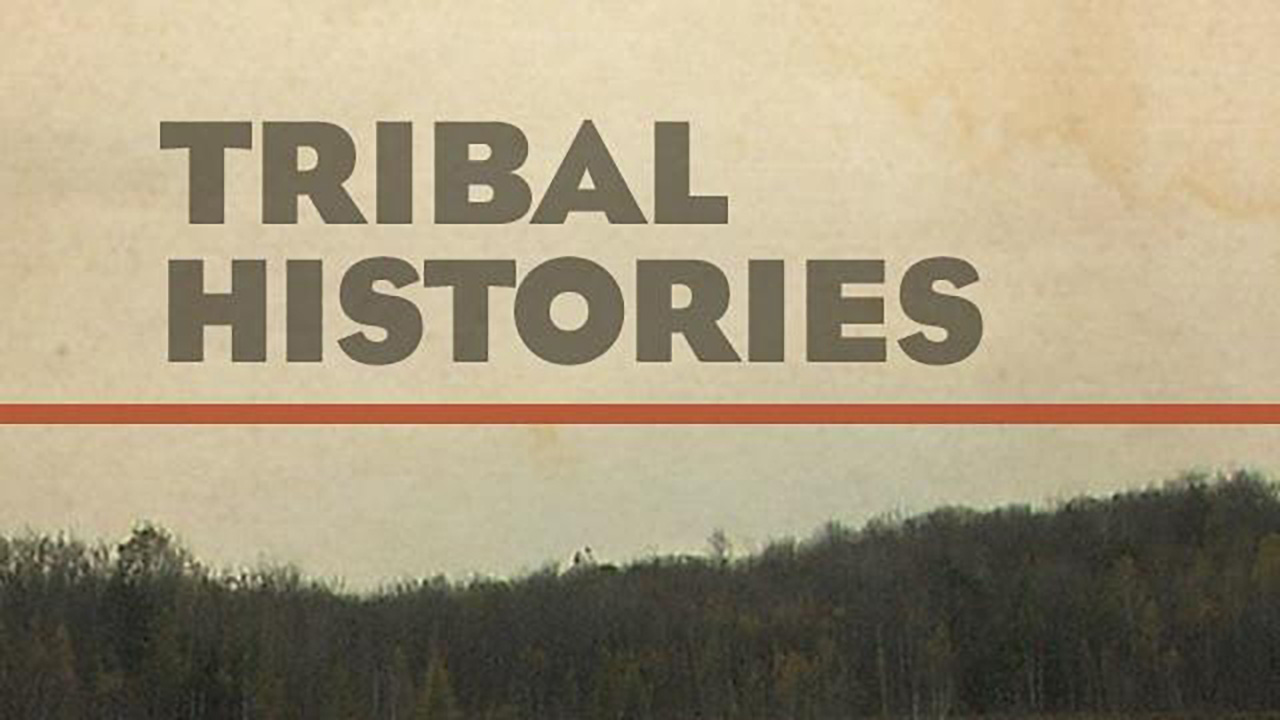
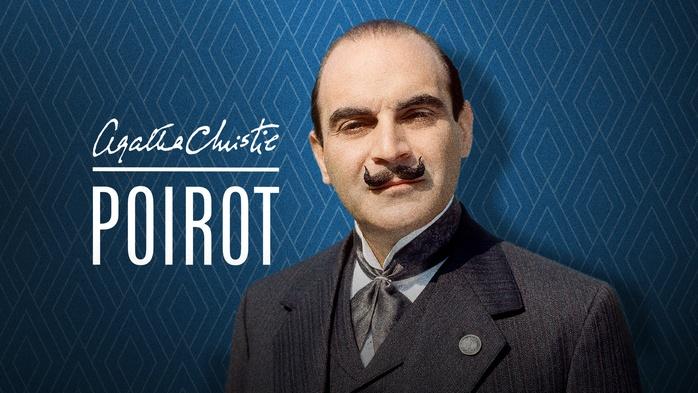



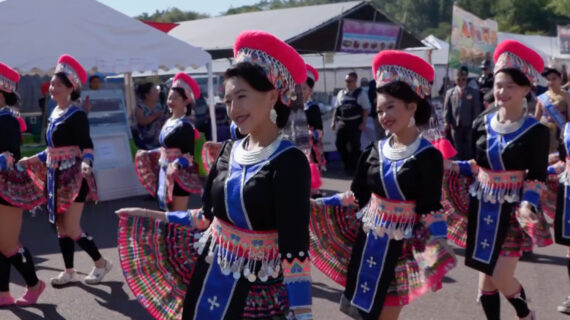
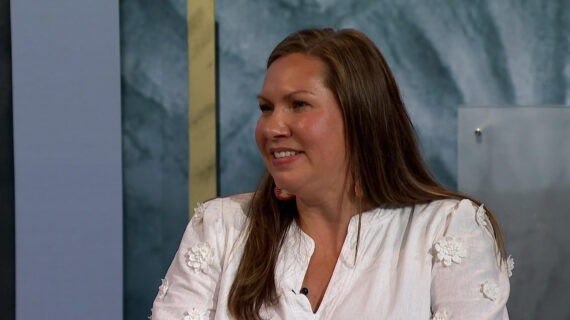
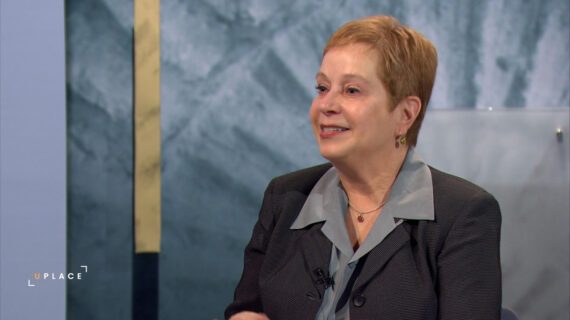
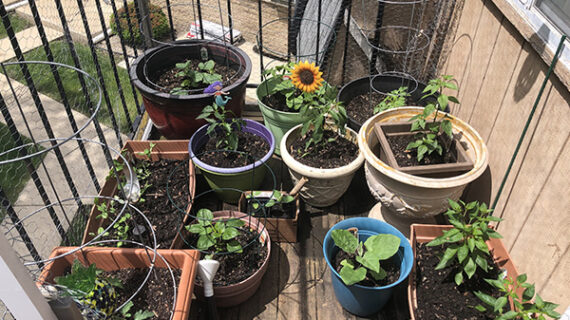
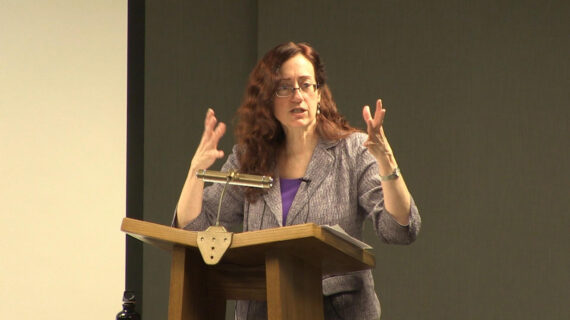
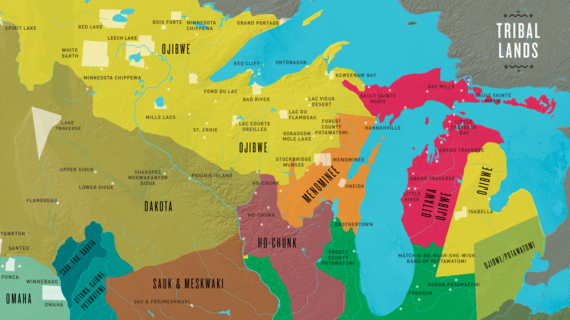
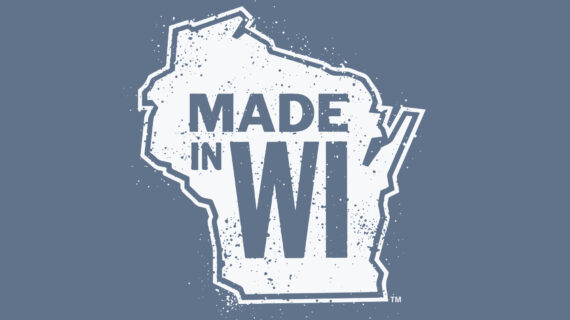

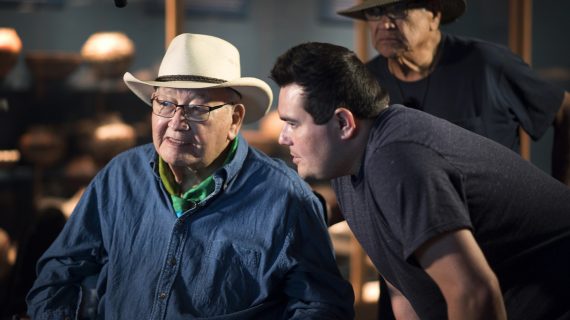


Follow Us